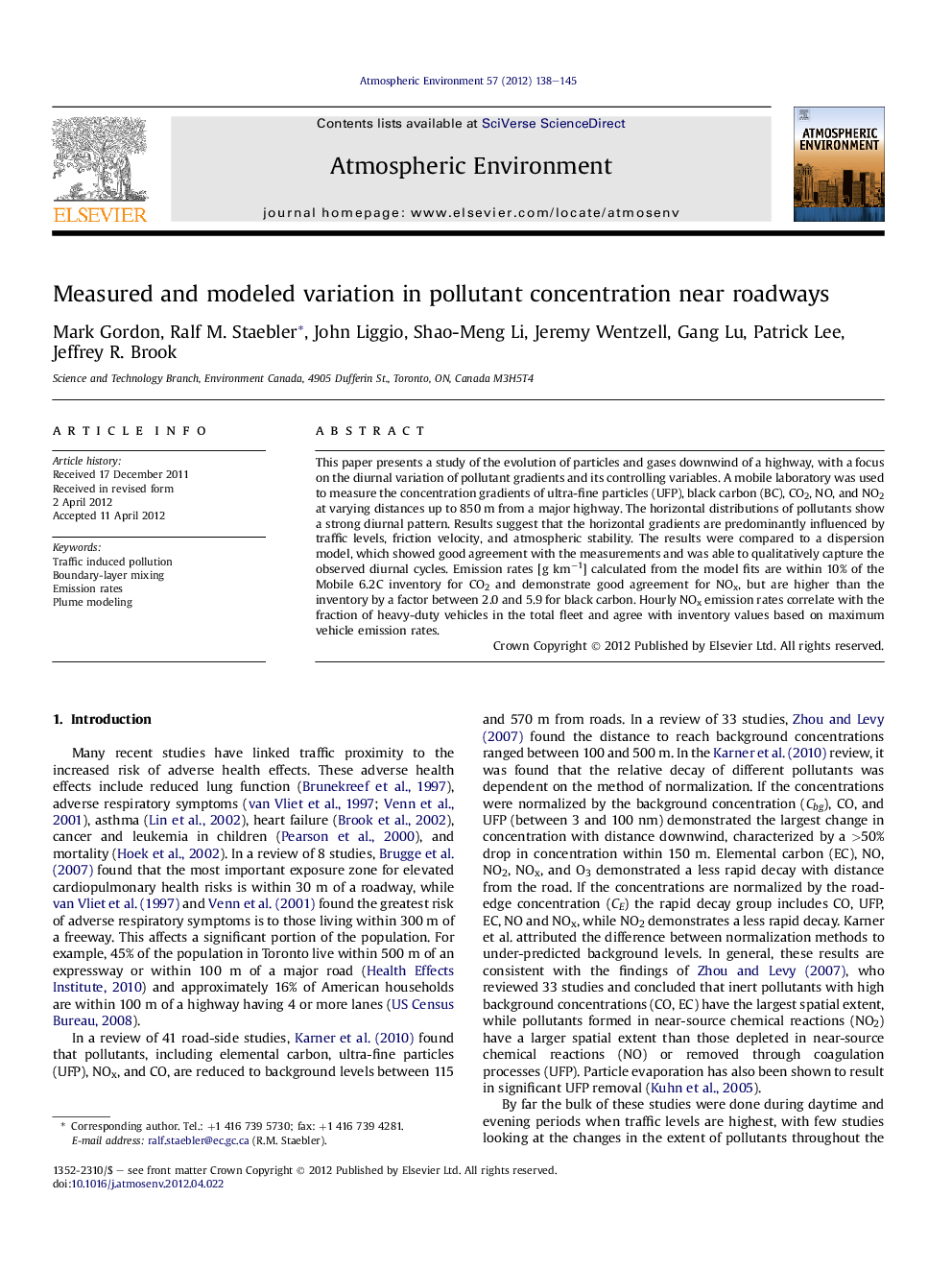| Article ID | Journal | Published Year | Pages | File Type |
|---|---|---|---|---|
| 4438887 | Atmospheric Environment | 2012 | 8 Pages |
This paper presents a study of the evolution of particles and gases downwind of a highway, with a focus on the diurnal variation of pollutant gradients and its controlling variables. A mobile laboratory was used to measure the concentration gradients of ultra-fine particles (UFP), black carbon (BC), CO2, NO, and NO2 at varying distances up to 850 m from a major highway. The horizontal distributions of pollutants show a strong diurnal pattern. Results suggest that the horizontal gradients are predominantly influenced by traffic levels, friction velocity, and atmospheric stability. The results were compared to a dispersion model, which showed good agreement with the measurements and was able to qualitatively capture the observed diurnal cycles. Emission rates [g km−1] calculated from the model fits are within 10% of the Mobile 6.2C inventory for CO2 and demonstrate good agreement for NOx, but are higher than the inventory by a factor between 2.0 and 5.9 for black carbon. Hourly NOx emission rates correlate with the fraction of heavy-duty vehicles in the total fleet and agree with inventory values based on maximum vehicle emission rates.
► Pollutants were measured downwind of a highway throughout the day. ► Horizontal gradients dependent on traffic flow, friction velocity, and stability. ► Dispersion model shows good agreement with measurements. ► Emission rates of black carbon and NOx from trucks are higher than inventory.
